Proactively respond to drought and salinity
Water-saving drip irrigation model adapts to drought in the Mekong Delta. (Photo: Long An Newspaper)
Faced with complex weather conditions, localities in the Mekong Delta have implemented synchronous and diverse solutions to cope with drought, water shortage, and saltwater intrusion, such as adjusting production schedules, operating irrigation systems to control salinity, and especially ensuring water supply for people. Localities have also provided water storage equipment and tools for households, established additional public water supply points, organized rotating water supply, expanded water supply pipelines, added wells, used saltwater filtration equipment, etc.; and accelerated the implementation of water supply and salinity control projects.
Therefore, up to now, the damage to agricultural production in the Mekong Delta is very low compared to the impact of drought and saltwater intrusion. As of April 6, 2024, the winter-spring rice crop in the Mekong Delta has harvested 1,304,301 ha/1,488,182 ha of seed, reaching 87.6%. Fruit growing areas are still safe.
According to Deputy Director General of the General Department of Hydrometeorology Hoang Duc Cuong, in the coming time, there will likely be 3 deep saline intrusions in the Mekong Delta in April and early May 2024. It is expected that from April 20 in the South, there will be unseasonal rains, however, the rainy season will officially begin from May 20.
Faced with the impacts of drought and saltwater intrusion in the Mekong Delta, especially in the Ca Mau area, from the beginning of the year, Deputy Minister of Agriculture and Rural Development Nguyen Hoang Hiep proposed to consider a plan to transfer water to this area. In particular, Ca Mau province alone does not have an additional water source, can only store water on the spot, so it is facing many difficulties. This is different from the remaining provinces in the region. Through a field survey, Tran Van Thoi district of Ca Mau province is seriously subsiding, mainly due to people storing fresh water for production and daily life, but from the beginning of 2024 until now, there has been no rain in Ca Mau, combined with intense heat, so a lot of water evaporates, causing drought to come quickly, basically the fields have no water, causing subsidence.
To overcome this situation, the Ministry of Agriculture and Rural Development has proposed 3 solutions: It is necessary to limit traffic, especially for heavy-duty vehicles on canals, ditches, and roads combined with canals; calculate the storage of water not concentrated to pump additional water from neighboring production areas; Ca Mau province needs to calculate the conversion of production structure from 2 rice crops to 1 rice crop + 1 shrimp crop, so that in the dry and saline season, salt water can be added to raise shrimp. If the conversion is successful, it will both stabilize production and limit subsidence.
Along with that, it is necessary to study solutions, consider the option of transferring water to Ca Mau, including 2 main solutions: building a sluice gate at Tac Thu to prevent salt water from flowing in from the sea. If this sluice gate is completed, the Tran Van Thoi area will have a solution to store water in a non-concentrated way.
At the same time, water will be transferred from the Cai Lon - Cai Be sluice system through the Chac Bang River to Ca Mau and from the Tien and Hau rivers through Quan Lo Phung Hiep for this province. Currently, the Tac Thu boat lock sluice is under construction, after which a plan to transfer water to Ca Mau will be considered.
In Ben Tre province, the Ministry of Agriculture and Rural Development is also implementing engineering solutions to ensure that people have enough water for production and daily life. Specifically, the Ministry is implementing the Ben Tre water management project from a loan from the Japanese Government (JICA3), which will be implemented at the end of 2024 and is expected to be completed by the end of 2025. When the JICA3 project is completed, Ben Tre province will have large sluices, contributing to water storage, operation for production, daily life, and providing fresh water for North Ben Tre.
For the Southern Ben Tre region, medium-term public investment capital will be used to build the Vam Thom and Nuoc Trong sluices, helping this area have enough water for production and daily life, so there is no need to transfer water.
To minimize the damage caused by natural disasters, localities in the Mekong Delta pay special attention to avoiding drought and salinity. Therefore, localities in the risk areas have implemented early planting to avoid drought and salinity at the beginning of the season; these areas are harvested before the peak of salinity intrusion; at the same time, ensuring absolute safety for fruit trees, especially high-value fruit trees. Localities have organized decentralized water storage, dug ponds and lakes; at the same time, ensuring water sources for daily life and production. Areas identified as having difficulties in water sources have implemented many solutions such as extending pipelines, storing water, building small lakes, etc.
The Department of Irrigation, Ministry of Agriculture and Rural Development has also issued a "Temporary technical guidebook on decentralized water storage and effective irrigation for fruit trees in the Mekong Delta, applicable in the context of saline intrusion in the dry season of 2023 - 2024" to guide solutions for water storage for fruit trees. Localities have also proactively implemented the construction and storage of water in decentralized ponds and lakes at the household and household level to ensure water sources for fruit trees during periods of increased saline intrusion.
Along with response solutions in production, localities operate existing irrigation works as well as speed up the completion of works under construction to be able to promote efficiency as soon as possible. Irrigation systems in the Mekong Delta have proactively controlled saline intrusion in areas 40 - 65km from the sea, with a total area of about 1.25 million hectares.
Specifically, at the mouths of the Vam Co River (Vam Co Dong, Vam Co Tay), the salinity control capacity of the irrigation works is 75 - 80km from the sea, to the Thu Thua Canal location of the Nhat Tao - Tan Tru irrigation system.
At the mouths of the Mekong River, on the Tien River system, irrigation systems have controlled salinity from 40 - 65km from the sea; on the Hau River, irrigation systems have controlled salinity from 35 - 55km.
The Cai Lon - Cai Be irrigation system is controlling saltwater intrusion on the Cai Lon - Cai Be river for about 384,000 hectares of agricultural production in the West coastal area quite well.
It is expected that in July 2024, the Nguyen Tan Thanh sluice gate project will also be completed ahead of schedule, put into operation and exploited to prevent salinity, store fresh water, protect nearly 100,000 hectares of agricultural production and create a stable source of domestic water supply for nearly 1.1 million people in the two provinces of Tien Giang and Long An.
Deputy Minister of Agriculture and Rural Development Nguyen Hoang Hiep said that the Ministry is continuing to coordinate with localities to implement the issued irrigation plans, especially in the Mekong Delta; including continuing to study the construction of a number of large sluice gates to block the outer ring, combined with planning research to have large, sustainable concentrated production areas for the Mekong Delta region.
Do not let people lack fresh water
Tien Giang Provincial Police provide free fresh water to people. (Photo: Ap Bac Newspaper)
In recent days, many households in the Mekong Delta have faced a serious shortage of domestic water, including many localities in Ca Mau province in urgent need of water. Therefore, the Chairman of the People's Committee of Ca Mau province has requested the provincial authorities to quickly review and propose solutions to help local people have enough water for daily use, and prevent people from buying domestic water at expensive prices.
Accordingly, the Ca Mau agricultural sector proposed that the Provincial People's Committee urgently implement the water supply for groups of people living in sparsely populated and scattered areas. The solution is to provide a 1m3 plastic tank to store water for those in particular difficulty, without water storage equipment, and in need of support. Along with that, 46 centralized water supply points are established for people to use in the communes: Khanh Binh Tay Bac, Khanh Binh Tay, Khanh Binh Dong, Tran Hoi (Tran Van Thoi district); Bien Bach commune (Thoi Binh district); Viet Thang and Viet Khai communes (Phu Tan district); Dat Moi and Lam Hai communes (Nam Can district); Tran Thoi commune (Cai Nuoc district).
For the group living near the centralized water supply works but not yet having access to networked water, quickly expand the water supply pipeline network at 6 centralized water supply works, with a total pipeline length of about 83.5 km to provide water to the people. In the immediate future, the youth union members, armed forces and local people will be mobilized to participate in installing above-ground pipelines and public taps, so that people can conveniently get water for use. In the long term, when appropriate funding is allocated, the Ca Mau agricultural sector will upgrade, repair, connect to the network and build new ones... to overcome the water shortage situation at the works.
On April 8, many specialized ships of the 659th Transport Brigade, under the Logistics Department of Military Region 9, transported clean water from Can Tho city to Ca Mau to provide free water for people in drought-affected areas. Accordingly, three large-capacity ships of the 659th Transport Brigade, under the Logistics Department of Military Region 9, have just arrived and provided about 1,700m3 of free fresh water to people in Bien Bach commune, Thoi Binh district, Ca Mau province. The specialized unit of Military Region 9 also donated hundreds of water tanks, barrels, and cans to poor and disadvantaged households so that people have more tools to store water for daily use.
In Ben Tre province, in order to help people reduce difficulties, the locality has reduced the price of clean water for daily use to share difficulties with people during the drought and salinity season. Accordingly, Chairman of Ben Tre Provincial People's Committee Tran Ngoc Tam signed and issued an Official Dispatch on the policy of reducing the price of clean water for daily use during the drought and salinity season of the Ben Tre Rural Water and Environmental Sanitation Center.
Specifically, the People's Committee of Ben Tre province approved the policy of reducing 10% of the clean water consumption price of the Center for Clean Water and Rural Environmental Sanitation according to Decision No. 25/2017/QD-UBND dated May 9, 2017 of the People's Committee of Ben Tre province for all water use purposes (household activities; public services, administrative units; material production activities; service business activities). The above reduced price includes value added tax, excluding environmental protection fees. Implementation period: 2 water bill periods, period 4/2024 and period 5/2024 (reduction for m3 of water used in March 2024 and April 2024).
Currently, the water source on the Hau River flowing into Hau Giang province is in short supply. The forecast for water demand in the localities is quite high, due to the prolonged hot weather, ensuring enough water for daily life until it rains and enough water for irrigation for farming and production is a big concern for the people here.
According to Hau Giang Rural Water Supply and Environmental Sanitation Joint Stock Company, there are currently a total of 26 water supply works in operation in the province managed by the company, located in Vi Thuy district, Long My district, Phung Hiep district, Chau Thanh district, Chau Thanh A district, Long My town and Vi Thanh city, providing water to 86,539 customers.
Mr. Nguyen Van Long, Chairman of the Board of Directors, commented: “For the Vi Thanh city and Long My district areas, there are currently two water supply works operating under the company's management, which are the Long My water plant, supplying water to 3,843 customers, and the centralized water supply station (IT) of Hoa Tien commune, currently supplying water to 2,266 customers. These are areas that are forecasted to be at high risk of being affected by drought and saltwater intrusion, with a very high shortage of domestic water. To ensure water supply for customers, the company has directed the re-operation of backup wells at these two stations when necessary. Up to now, the water supply situation in these two areas managed by the company is stable.
Mr. Nguyen Van Long added that the Company regularly updates and monitors the situation of saline intrusion through the media. At the same time, the Company also equips water supply stations with salinity meters, helping to regularly monitor the development of saline intrusion. This helps to promptly direct water supply stations to focus on operating and exploiting water resources effectively and appropriately. In addition, the Company also coordinates with local agencies to develop water supply pipelines according to the plan to use capital from the National Target Program./.
Bao Chau (t/h)/www.dangcongsan.vn
Source


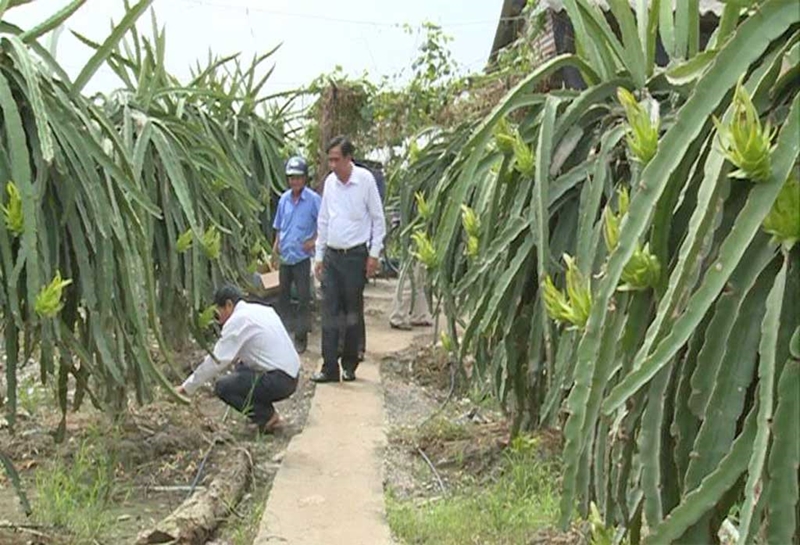
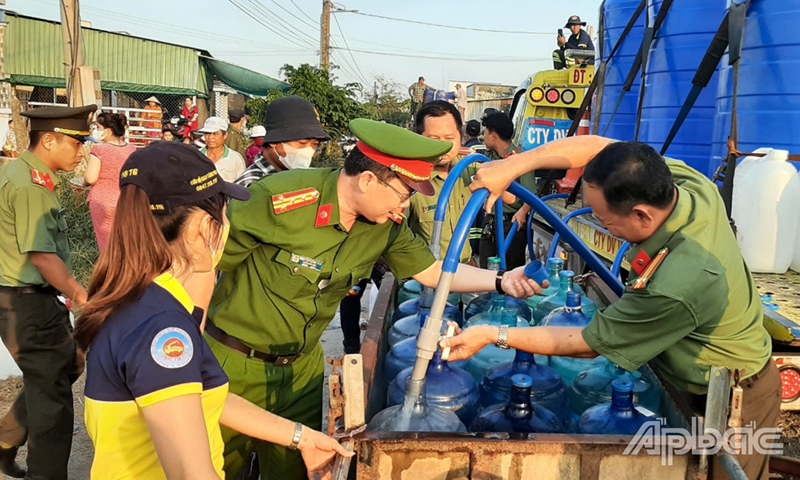

![[Photo] Official welcoming ceremony for French President Emmanuel Macron and his wife on a state visit to Vietnam](https://vphoto.vietnam.vn/thumb/1200x675/vietnam/resource/IMAGE/2025/5/26/a830702ef72f455e8161b199fcefc24d)
![[Photo] Pink ball and table tennis](https://vphoto.vietnam.vn/thumb/1200x675/vietnam/resource/IMAGE/2025/5/26/d9f770bdfda243eca9806ea3d42ab69b)



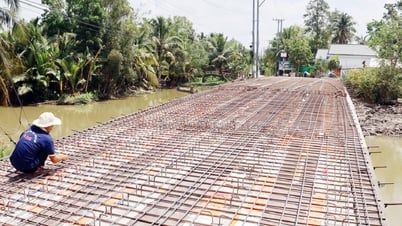
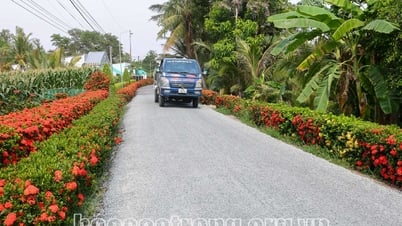




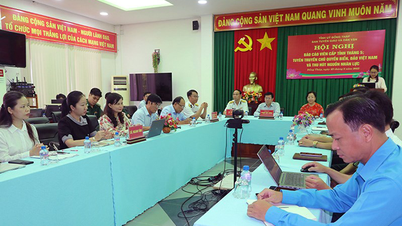











![[Photo] French President Emmanuel Macron and his wife begin state visit to Vietnam](https://vphoto.vietnam.vn/thumb/1200x675/vietnam/resource/IMAGE/2025/5/25/03b59c7613144a35ba0f241ded642a59)
![[Photo] Ea Yieng commune settlement project abandoned](https://vphoto.vietnam.vn/thumb/1200x675/vietnam/resource/IMAGE/2025/5/25/57a8177361c24ee9885b5de1b9990b0e)

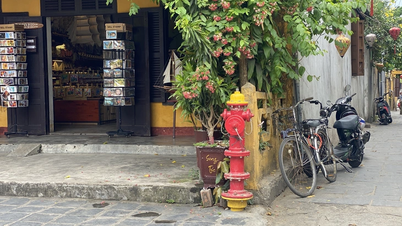











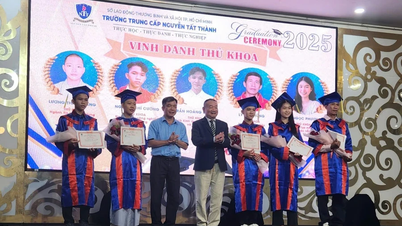









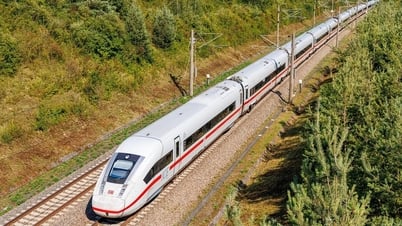








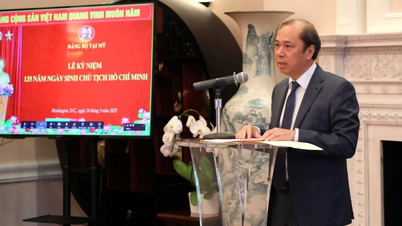





















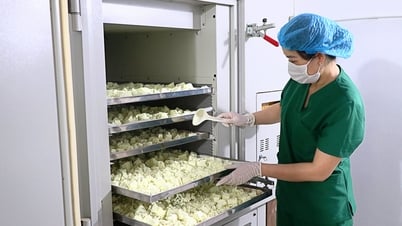









Comment (0)